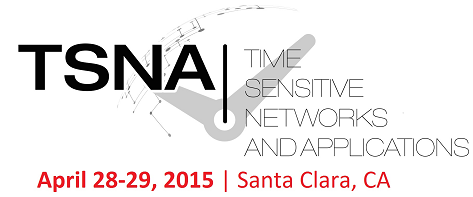 37,000 AV professionals descended on Las Vegas, NV last week for InfoComm 2014. By now you’ve probably seen the coverage of all the equipment from sites like AVNation, rAVe, AVNetwork, and Commercial Integrator, not to mention some wonderful independent analysis from Leonard Suskin and Penny Sitler on the presence of “booth babes” with countless others chiming in on their experiences and impressions of the show. If you thought it was sensory overload being at the show last week, it’s almost as bad trying to keep up with the post show analysis. Since you already have all those resources available for coverage of what equipment was shown and what experience was had, I wanted to discuss a different angle on what last week’s record breaking attendance demonstrated to me.
37,000 AV professionals descended on Las Vegas, NV last week for InfoComm 2014. By now you’ve probably seen the coverage of all the equipment from sites like AVNation, rAVe, AVNetwork, and Commercial Integrator, not to mention some wonderful independent analysis from Leonard Suskin and Penny Sitler on the presence of “booth babes” with countless others chiming in on their experiences and impressions of the show. If you thought it was sensory overload being at the show last week, it’s almost as bad trying to keep up with the post show analysis. Since you already have all those resources available for coverage of what equipment was shown and what experience was had, I wanted to discuss a different angle on what last week’s record breaking attendance demonstrated to me.
Attendance at InfoComm’s annual show has continued to see a rise in numbers every year that I have gone. Some years it has been a slight increase, others a pretty hefty jump, but it all depends on what you consider to be a jump. This year our most important tradeshow gained roughly 2000 people over last year. What’s most interesting to me about that is who those attendees were. In speaking briefly with an InfoComm official it was mentioned that each type of attendee (manufacturer, press, dealer/integrator, consultant, and facility managers) has increased by the same rough percentage until last year. At InfoComm 2013 it was noted that the facility managers/tech managers (you might know them by the green badges) increased at a much larger margin than the other types. While I haven’t seen the official numbers showing how many of each type of attendee was in Las Vegas, I can definitely attest to a high quantity of green badges making their way through the halls.
This added influx of those responsible for the technology at colleges, universities, and in enterprise business solutions demonstrates recognition by those not necessarily experienced in the AV industry that the time has come where an understanding of our equipment and services is required because it impacts their business. And it isn’t just attendance at the show where they showed their numbers, but also in taking part in education. I would estimate 75% of the attendees in my course were there as representatives of a university technology department.
The AV industry has always been a bit of a niche, ancillary part of technology. We’re the industry where nothing is mentioned until something doesn’t work correctly. With the evolution of how we communicate going through such a transition in this new century, the services and equipment that we provide have become more the centerpiece of people’s lives at work and in their homes. This is bringing organizations to the realization that if they begin to bring AV professionals in house to advise them they can have more control over how these systems are designed and implemented. Those that have been the clients in the AV industry aren’t just taking our word on what they need anymore; they are starting to hire their own professionals.
By recognizing the need and putting educated professionals in their organizations, we are seeing a shift that leans in the direction bringing the AV services back to an “in house” model. I was lucky enough to speak with a few different technology managers at universities and heard the common thread that they are taking on more of the responsibility not only for product and system design recommendations, but also for the actual installation and programming of these devices as well; essentially turning their departments into an integration firm with one client. While this model will not work for the smaller businesses, this is recognition from outside the AV industry that having a professional with systems understanding as a part of their organization is becoming vital.
All too often the AV systems have fallen under the facilities heading, but with the AV/IT convergence we’ve seen in the last decade that responsibility is falling to the IT departments to maintain. Seeing so many badges where the titles had some variation of IT director/manager clearly delineates that there has been a recognition that the squabble between AV and IT might be starting to go away as our IT brethren reaches out to really understand how it is that we interact with the network they hold jurisdiction over.
More employees representing end users and clients, a resolve to have a greater understanding of what AV solutions are and how they operate, those are the kinds of things that show there is true AV/IT convergence, and even more so, AV/business convergence. We aren’t just an industry sitting on the outside anymore. We are at the front and center when it comes to some of the decisions being made as to the appearance these businesses want to show to the world. The AV industry is changing the way that people interact, share, and learn both in business and in the classroom.
This industry has had a chip on its shoulder for a long time, always feeling like it was the one being left out or being stepped on by someone else. But if this shift in attendance is any indication, the spotlight is moving towards our industry and it’s our time to shine.





